| This EarthCache developed by an |
 |
 |

An example of Liesegang Rings at GZ
INTRODUCTION
Fascinating patterns are frequently seen in rocks. These patterns may be due to the way the rocks have formed or cracked, or to the fossils, or to the minerals they contain. Occasionally rocks exhibit rhythmic repeating patterns, when their chemical composition and/or physical properties vary sequentially. Many patterns are the result of systematic variations in the external environment that generated the deposit. For instance, varves in lake sediments reflect annual variations due to seasonal changes in temperature or rainfall. However, it is now recognized that some rhythmic patterns, such as Liesegang Rings, result from self-organizing geochemical processes at the time of rock formation and are not due to a fluctuating external variable as is the case for sedimentary bands. This earth cache will show you some of these interesting patterns in Table Mountain's rocks caused by geochemical processes.
LOGGING REQUIREMENTS
TO AUTHENTICATE A LOG FOR THIS EARTH CACHE YOU NEED TO ANSWER FIVE QUESTIONS (INDIVIDUALLY AND IN YOUR OWN WORDS IF PART OF A CACHING GROUP) AND EMAIL YOUR ANSWERS VIA MY GEOCACHING PROFILE.
- At GZ explain where the Liesegang rings can be seen relative to the path along which you have hiked. Where did you see them, and are they close to vertical, or close to horizontal?
- What is the name of the German chemist who first studied self-organizing repetitive patterns in chemical reactions?
- Do Liesegang rings form in sediments before or after they are lithified (turned to stone)?
- Write a few sentences that would explain to a muggle friend what they should expect to see at an earth cache dealing with Liesegang rings.
- Some ring-like patterns in nature (e.g. tree rings) are caused by seasonal variations in temperature or rainfall. Are the Liesegang ring patterns in sedimentary rocks due to seasonal variations? Briefly explain your answer.
GEOLOGICAL LIESEGANG PHENOMENA
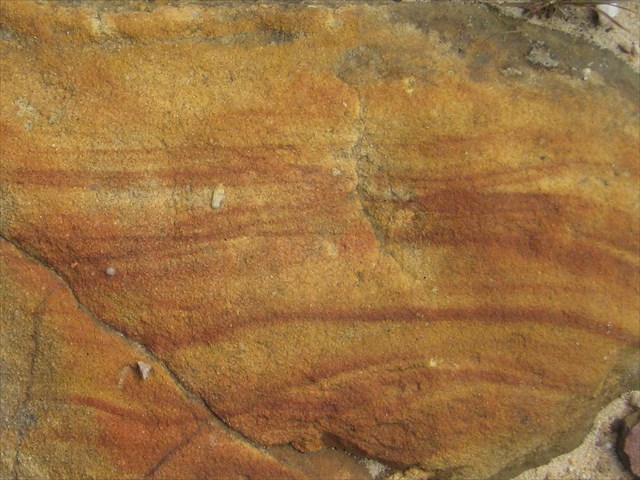
Liesegang Bands at GZ
Liesegang rings, sometimes termed bands, are a type of rhythmic pattern characterized by the visible spatial arrangement of precipitated minerals, each ring made from a large number of single crystals (called crystallites) of various sizes or colours. These self-organizing ‘periodic precipitation patterns’ were first studied in the laboratory by Raphael Liesegang, a German chemist. In 1897 Wilhelm Ostwald (winner of the Nobel Prize for chemistry in 1909) offered an explanation of how these patterns are formed and proposed that such rhythmic patterns be called Liesegang bands (or rings) in honour of the man who had first studied them.
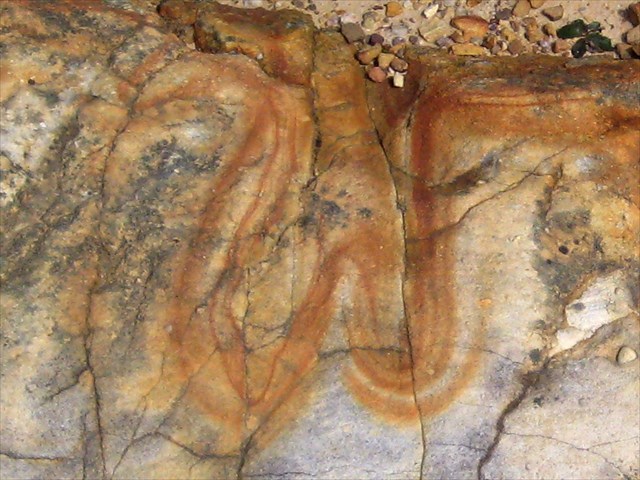 |
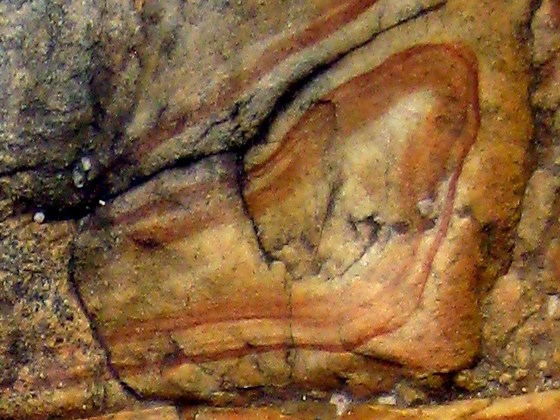 |
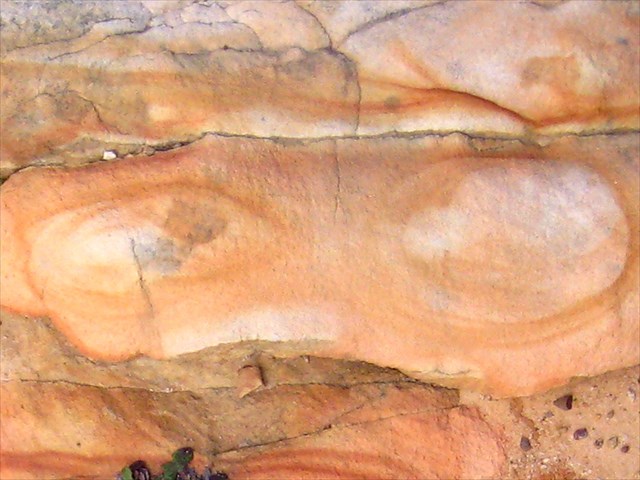 |
| Liesegang Swirls |
Liesegang Rings |
Liesegang Eyes |
Liesegang geological patterns are coloured bands of cementing matrix observed in sedimentary rocks that typically cut-across bedding. These secondary minerals are arranged in a regular repeating pattern. Liesegang rings are distinguishable from other sedimentary structures by their concentric or ring-like appearance. The precise mechanism by which Liesegang rings form is not fully understood and is still the subject of research but it is accepted that they develop in sediments before these are solidified into hard stone.
In one set of theories a precipitation process is thought to be the catalyst for Liesegang ring formation: this is referred to as the Ostwald-Liesegang supersaturation-nucleation-depletion cycle. In this category of models, nucleation and growth of precipitate occurs at a critical supersaturation value. As the precipitate band forms the concentration of reactant is locally depleted and precipitation ceases. But as the reaction front moves the supersaturation value again reaches its threshold and another band is precipitated. The cycle proceeds in this way producing a sequence of bands.
Post-nucleation theories postulate that the rings form after the nucleation phase has occurred. In these theories reagent diffusion and Ostwald ripening is held to be the mechanism that gives rise to the sequence of rings. [Ostwald ripening is the term given to the fact that in a chemical reaction large particles grow at the expense of the small ones. Small-sized particles dissolve and deposit on the surface of the bigger particles.] As the supersaturated reagent diffuses through the sediment a sequence of bands with enhanced precipitate concentration form, separated by zones with little or no precipitate. Because bands of large crystallites deplete adjacent bands of precipitating reagent, alternate dark and pale rings due to bands of heavy and light mineral precipitation are formed (as shown below).
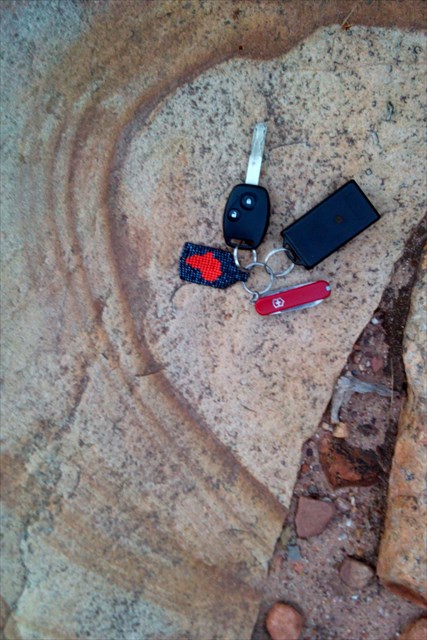
Liesegang Rings in Table Mountain quartizitic sandstone
Sources
L’Heureux I. 2013: Self-organized rhythmic patterns in geochemical systems. Phil Trans R Soc A 371: 20120356.
http://dx.doi.org/10.1098/rsta.2012.0356
Manzelli P. 2008: Liesegand rings and natural art, In self organization phenomena. Self Organizational Phenomenas, Florence, 14 November 2008. http://www.edscuola.it/
https://malagabay.wordpress.com/2013/10/27/liesegang-rings-1-the-liesegang-phenomenon/
https://malagabay.wordpress.com/2013/10/30/liesegang-rings-3-theory-and-practice/
https://malagabay.wordpress.com/2013/11/04/liesegang-rings-5-geological-quicksand/